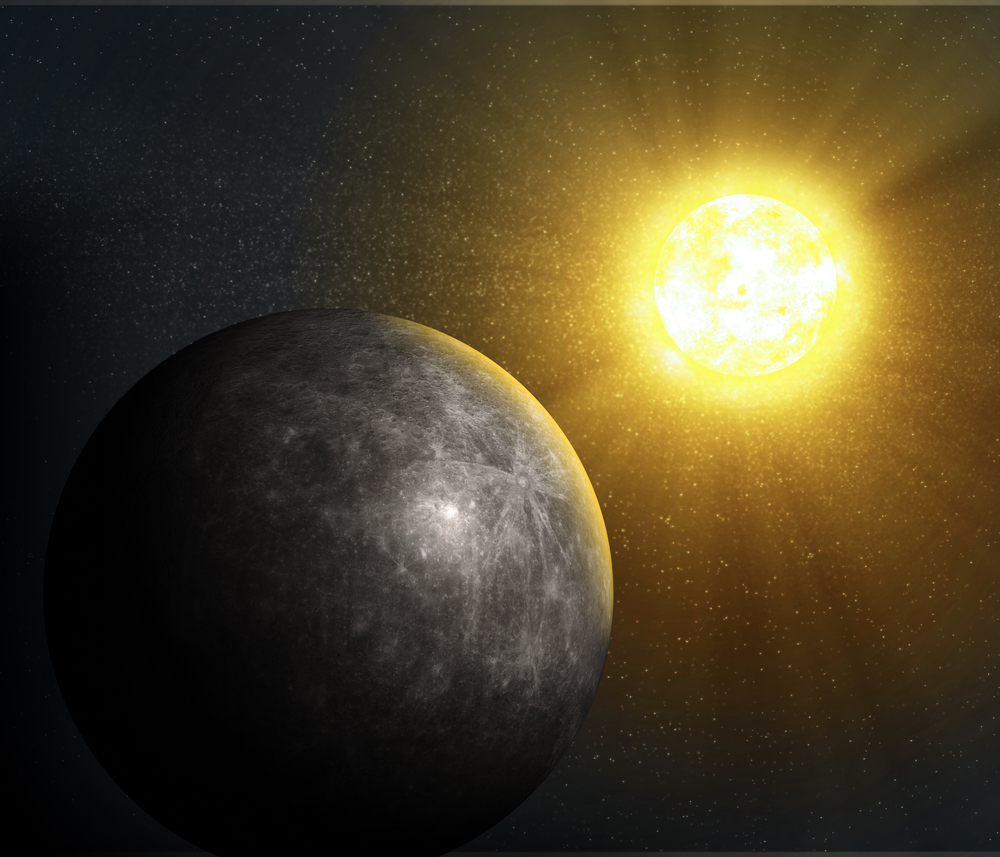
The planet Mercury will perform a transit across the Sun today, in an event that will be visible right across most of the northern hemisphere, creating great excitement among those who spend their time staring into space.
Between 11.12am and 6.41pm (GMT) on Monday May 9th, a small speck will crawl across the face of the Sun. Although the distance between us and our nextdoor-but-one neighbour (48 million miles) will make it appear to move slowly, Mercury is actually the fastest planet in our solar system, hurtling along at a rather reckless 105,947 miles (170,505 kilometers) per hour.

The impatient planet performs a loop of the Sun every 88 days (in Earth time), but it spins on its own axis much slower than our own globe, with a Mercury day lasting for 58 Earth days. So, in other words, each day on Mercury lasts two-thirds of a local year.
The first rock from the Sun is a enigmatic little planet. It bears the scars of a violent volcanic past, and NASA’s recent MESSENGER mission revealed the surprising fact that its earliest crust was made of graphite. Its atmosphere is thin, but it contains helium.
With a diameter of 4,879km, Mercury is the smallest planet in our solar system—in fact it’s not much bigger than Earth’s Moon—and therefore its transit across the sun will be a little harder to follow than that of Venus, the other celestial body that lies between us and our nearest star. Transits of Venus come in pairs separated by eight years, with intervals between each pair lasting over a century.
However, it was whilst watching Mercury performing a transit in 1677 that the English astronomer Edmund Halley suddenly realised that it would be possible to figure out the size of the cosmos (or at least the distance between Earth and the Sun) by timing a planetary transit from two separate points on our own planet, and then using the distance between those two points and some tricky trigonometry.
It was this eureka moment that led to Captain James Cook being sent to Tahiti for the transit of Venus in 1769, while other ships and observers were sent to the North Cape and Hudson Bay. Cook later observed a transit of Mercury from New Zealand, in a spot that he named Mercury Bay.
Each century, Earthlings are treated to 13 or 14 transits of Mercury, but you have to be on the right part of the globe to see them, at the right time of the day, and in the right weather conditions. Occupants of Mercury Bay will miss this particular flyby, but if the clouds part and you live in the UK, Europe, US, or Canada, today you will get the chance to see something truly special.
For a idea of how the transit will look from Britain and Ireland, check out this video.
(Please don’t look at the sun directly—even while wearing sunglasses or other protection, or using a phone, and never look at it through a telescope or binoculars—otherwise you could seriously go blind. To observe the transit properly you need a telescope fitted with a special solar filter. The Open University has made a safety video for those wanting to watch the transit live. However, the best way to see the transit is either online, on this digital feed, or by attending a public event, many of which are listed here on the European Space Agency’s website.)
Miss it and you won’t get a second chance to see Mercury pass the Sun until November 11th 2019, and after that the wait is even longer, with another transit due in November 2032.
